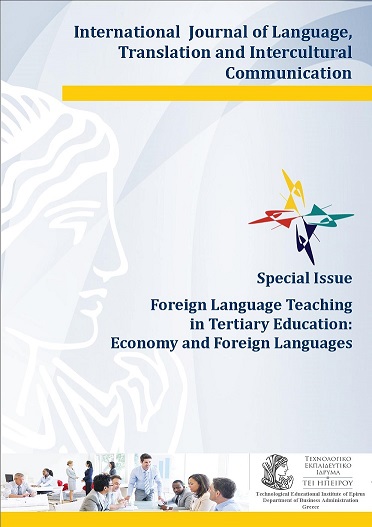Employee discourse: tensions between the use of English and multilingual exchanges in daily work activities.

Abstract
A number of European projects – ELAN (2006), Dylan (2006-2011), CELAN (2011-2013) – have confirmed the importance of multilingualism in the workplace. They provide evidence that a multilingual environment increases the diversity and the quality of projects, while monolingualism can mean a loss of markets. Since the ‘80s, English as a lingua franca (ELF) has been accepted as the international business language. Although English is not considered a threat to multilingualism (House, 2002, 2003), tensions exist between these two forms of communication: ELF and multilingualism. In this paper, I present an analysis of Airbus employee interviews using argument formulas (Anscombre, Ducrot, 1983). The initial analysis of what is said before and after the connector “but/pero/aber/mais” within interviews in four languages indicates tensions between the use of English and multilingual exchanges in daily work activities. The combination of “enunciation frames” (Charolles, 1997) and the role of personal pronouns (Benveniste, 1974) shows that the employees adapt their communication according to workplace structures: they tend to use English at an executive or a departmental level, while at team and face-to-face levels their communication benefits from multilingual skills.
Article Details
- How to Cite
-
LEJOT, E. (2016). Employee discourse: tensions between the use of English and multilingual exchanges in daily work activities. International Journal of Language, Translation and Intercultural Communication, 4(1), 43–53. https://doi.org/10.12681/ijltic.10344
- Section
- Articles

This work is licensed under a Creative Commons Attribution-NonCommercial-ShareAlike 4.0 International License.
Copyright Notice
Authors who publish with this journal agree to the following terms:
- Authors retain copyright and grant the journal right of first publication with the work simultaneously licensed under a Creative Commons Attribution License that allows others to share the work with an acknowledgement of the work's authorship and initial publication in this journal.
- Authors are able to enter into separate, additional contractual arrangements for the non-exclusive distribution of the journal's published version of the work (e.g., post it to an institutional repository or publish it in a book), with an acknowledgement of its initial publication in this journal.
- Authors are permitted and encouraged to post their work online (e.g., in institutional repositories or on their website) prior to and during the submission process, as it can lead to productive exchanges, as well as earlier and greater citation of published work (See The Effect of Open Access).


